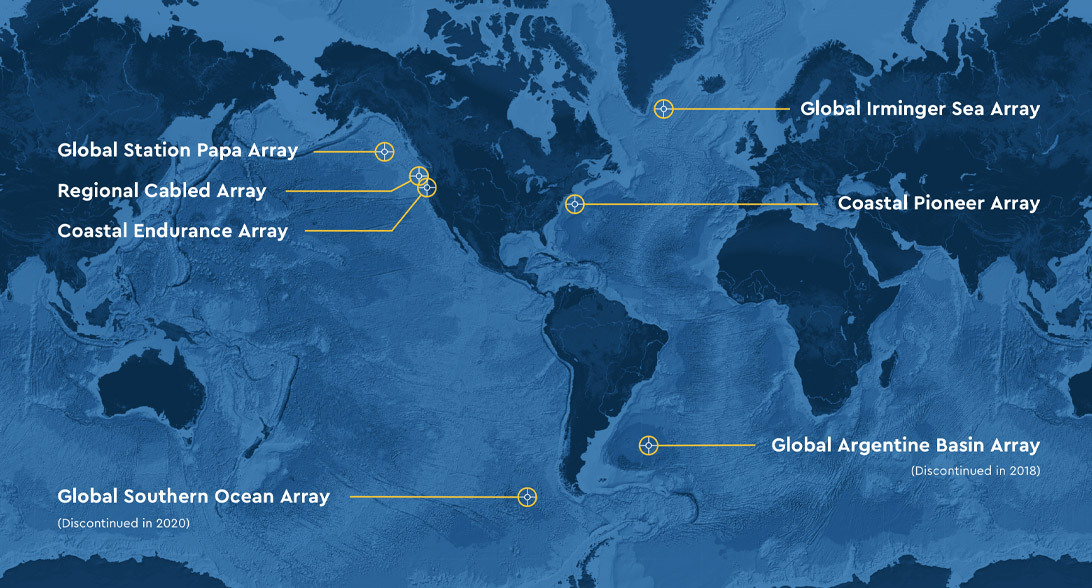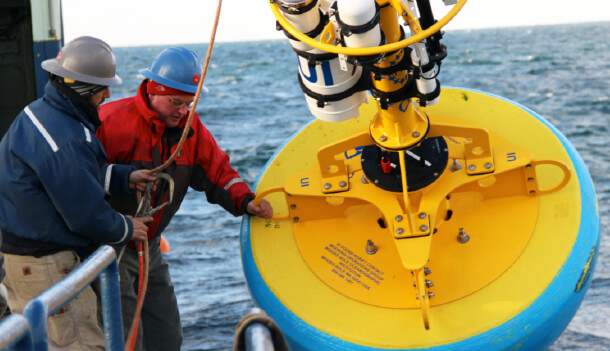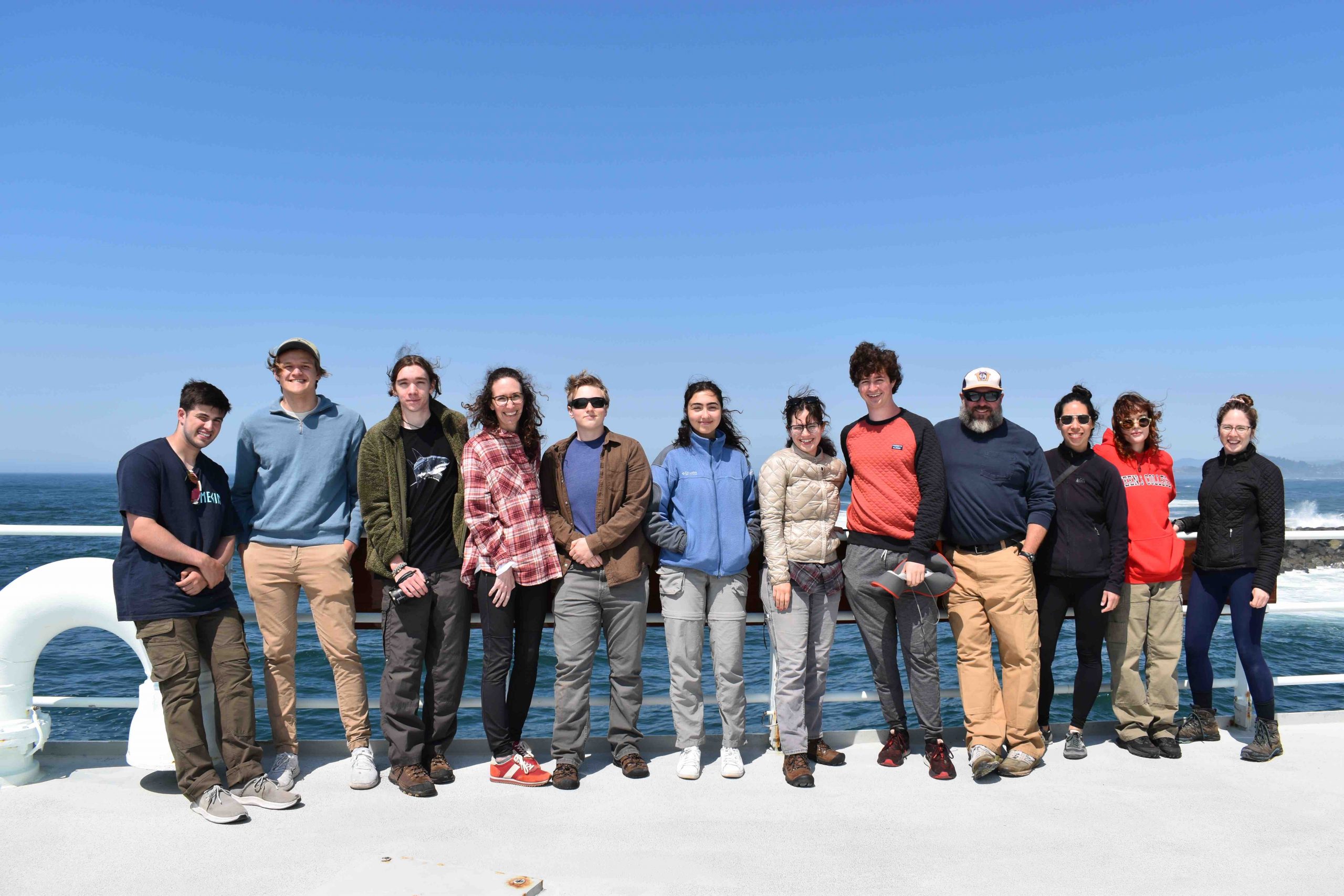What’s new?
What is OOI?
The Ocean Observatories Initiative (OOI) is a science-driven ocean observing network that delivers real-time data from more than 900 instruments to address critical science questions regarding the world’s oceans.
Funded by the National Science Foundation to encourage scientific investigation, OOI data are freely available online to anyone with an Internet connection.

The OOI has three major observatory elements linked together by instrument, infrastructure, and an information management system.
- Global Ocean Arrays
- Regional Cabled Arrays
- Coastal Arrays
Image of the week
The Regional Cabled Array’s (RCA) Operations and Maintenance Expedition that left Newport, Oregon aboard the R/V Thomas G. Thompson on Monday August 14, after a one-day weather delay. The expedition consists of four legs over 41-days during which more than 100 instruments will be moved in and out of the water. With a science team of 12, an engineering team of 20 (not all onboard), a Jason team of 12, the mission is complex and multi-layered. 25 students and six visitors round out the science party.
Watch live as the action unfolds aboard the R/V Thomas G. Thompson.
How to participate
OOI brings data to your doorstep, without ever having to go to sea. Opportunities exist to customize OOI data by adding instruments or platforms to the existing infrastructure, proposing additional or modified sampling, participating in cruises, borrowing OOI equipment, or simply exploring real-time data to answer scientific questions. Explore the ways you can participate in the OOI.


